|
Who is going to buy your product, where they are and why they will buy your
product(s) has to be determined before any success can be expected. Before
completing the information, you will have to gather the requested information.
Getting market information has to be an ongoing activity in any business wishing
long term success. Having a marketing analysis program to guide you with this
indispensable part of marketing may be a wise choice.
Define the scope of the market you are targeting. How big is it? Who are the
main competitors? Try to define all your markets. Local, global, product/market
combinations.
You have to obtain all the necessary information to be able to aim and score.
Our advice is never to gamble on one horse. Try to define a few product/market
combinations and share the available resources according to contribution
expectancy ratios.
Thorough market research will increase credibility, belief of yourself, your
employees and all external important persons. You'll end up understanding the
marketplace much better. You're to develop a realistic market-entry strategy,
knowing your customer needs, providing the right product quality at the right
price using the correct promotional methods and distribution will help you to
more accurately focus on your targeted customer types.
The target share
In the worksheet you'll find tables for collecting geographic and
demographic information. You may add another table for psychographics or
whatever. Note that any tables added by you are not included in the product line
generator.
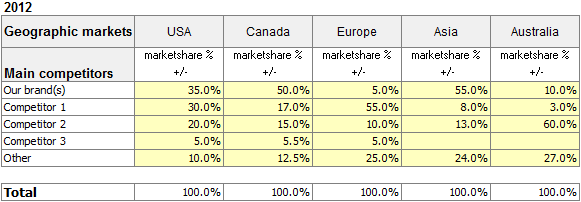
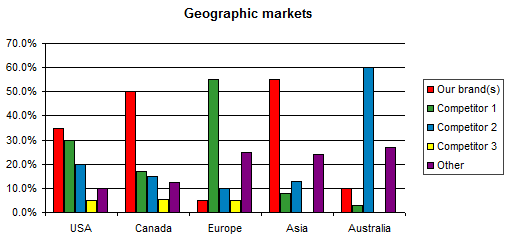
The market potential
This is the number of user units in a designated area who are capable and
willing to fulfill a certain need by purchasing a certain product. The size of
the market potential is primarily determined by:
- the number of needs a product fulfills
- the number of organizations/families/inhabitants in
a designated area
- the attitudes of the decision makers
- the financial position of the real and the potential
users in the designated area
The first table is used to assess the geographic markets in units.
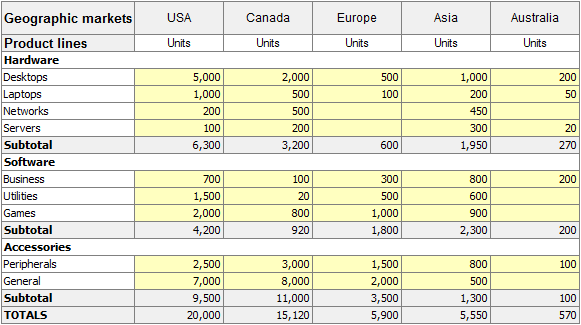
The second table is used to assess the geographic markets in currency.
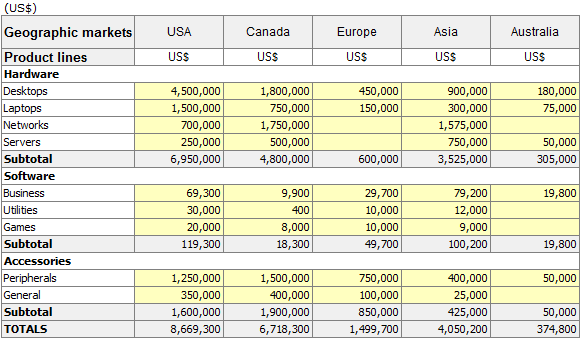
The target markets
Consumer demographics
If your company sells to consumers it's important to know what type of
consumers are purchasing your product(s). Try to gather as much information as
possible. Age, gender, marital status, education level, size of household,
homeowner, annual income, profession, geographic location and other aspects.
Industrial customer demographics
In order to determine which customers are to be targeted, you'll need to know
the historic facts. What kind of customers do you have, how much do they
purchase and how much is this of the total turnover. Where are they located and
other relevant information.
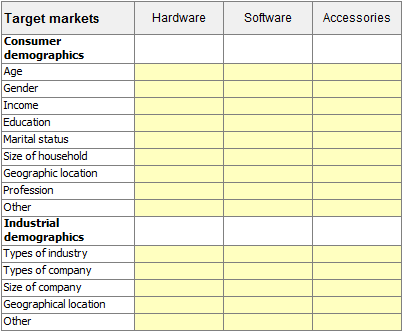
|